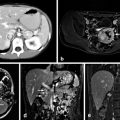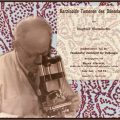Portrait of Frank Lahey, MD. (Courtesy of Lahey Hospital & Medical Center)
Early Life
Frank Lahey was born in Massachusetts to first-generation Irish immigrants in 1880 [1]. Lahey’s grandparents were farmers who immigrated during “The Great Famine” to the town of Stoneham, Massachusetts, located 10 miles north of Boston. In this small New England town, they raised a son, Thomas Lahey, who became a successful businessman. Thomas was an educated man and co-owned the Fletcher and Lahey firm, specializing in the construction of bridges [2].
Thomas married a young woman named Honora, and on June 1, 1880, they had their only child, Frank Howard Lahey. Frank Lahey was a curious child with diverse interests. Howard, as his friends called him, enjoyed the outdoors and sports such as American football, baseball, shooting, and track. As a secondary school student, he partook in track and field competitions with some success.
Thomas Lahey tried to condition his son in the family business, where Frank was employed during his summer vacations. However, despite his father’s best efforts, Frank avoided the family firm and had no interest in taking over the family business. Rather, Frank took great interest in Dr. Charles Benson, a progressive local physician. Frank Lahey later admitted that his exposure to Dr. Benson inspired him to become a physician.
Education
Frank Lahey was a diligent and ambitious student. He completed his undergraduate studies at Harvard, graduating at the turn of the twentieth century. He then attended Harvard Medical School, where he received his medical doctorate in 1904 [3]. Following medical school graduation, Dr. Lahey was an intern at the Long Island Hospital. He then returned to Boston to continue his undesignated medical training at the Boston City Hospital, followed by formal surgical training at the Haymarket Square Relief Station [4]. As a surgical trainee, Frank Lahey proved to be well-organized and eager to teach others.
Early Career and the Lahey Clinic
After completing his surgical training, Frank Lahey had dual appointments at Harvard and Tufts Medical Schools. Although Lahey’s schedule was exceedingly demanding, he thrived as a junior faculty member at both institutions. When the USA entered World War I in 1917, Dr. Lahey readily served his country as the director of surgery in the Evacuation Hospital No. 30 in France. Expanding his knowledge as a military surgeon, Dr. Lahey deduced that “asepsis, antisepsis, and anesthesia had created a new surgery” best accomplished by a team. His leadership role in the war influenced his views regarding the organization of health care delivery.
Lahey returned to Massachusetts after his service in World War I. He resumed his appointments at Harvard and Tufts medical schools and started a private practice in Boston’s Kenmore Square [5]. Based on his wartime experience, he was convinced that a team-based model could improve the delivery of surgical care. In this paradigm, dedicated and collegial clinicians would collaborate and teach each other. Lahey believed that teamwork was the key to successful surgery, and he began implementing his idea within his newly created private practice, the Lahey Clinic.
Lahey assembled a team of caregivers for his new practice, which included Miss Wallace Blanche, a nurse he met during his years in the war; Dr. Howard Clute, an anesthesiologist; and Dr. Lincoln Sise, a gastroenterologist. For a few years, this team would travel incessantly between Lahey’s private practice, the Peter Bent Brigham Hospital, the New England Baptist Hospital, and the New England Deaconess Hospital. The roads were tough and the winters in Boston were unforgiving for frequent travel. Consequently, much time was wasted and the team’s morale suffered.
Dr. Lahey frequently spoke of his dream hospital where all aspects of patient care could be provided under a single roof. He envisioned a hospital where patients could acquire multiple consultations from expert physicians working together with a collaborative spirit. Although commonplace today, this idea initially faced great opposition and skepticism from the established Boston medical community. Lahey ended his appointments at Harvard and Tufts to dedicate himself completely to the creation of his dream: a collaborative multidisciplinary clinic.
By 1926, Dr. Lahey had achieved his vision of a multidisciplinary hospital. The Lahey Clinic had integrated waiting rooms, doctors’ offices, and examination rooms. Furthermore, Lahey started fellowship programs where young surgeons could further develop their skills and knowledge base under the close guidance of an attending surgeon. The first Lahey fellowship program involved only two trainees, but eventually expanded to approximately 100 fellows.
One of Dr. Lahey’s best students was Sara M. Jordan. She first worked with Dr. Lahey as a medical student. Her unique personality captured his attention, so he decided to mentor her after graduation. At first, she was confused about which path of medicine to pursue; Dr. Lahey recognized that she could succeed in any profession and guided her into the rapidly developing field of gastroenterology. Dr. Jordan developed a highly successful career in gastroenterology, and Dr. Lahey later wrote that watching her progress was one of his greatest privileges in his life. As a teacher, Lahey influenced and inspired the careers of many surgeons and nonsurgical specialists [6].
Stay updated, free articles. Join our Telegram channel

Full access? Get Clinical Tree








